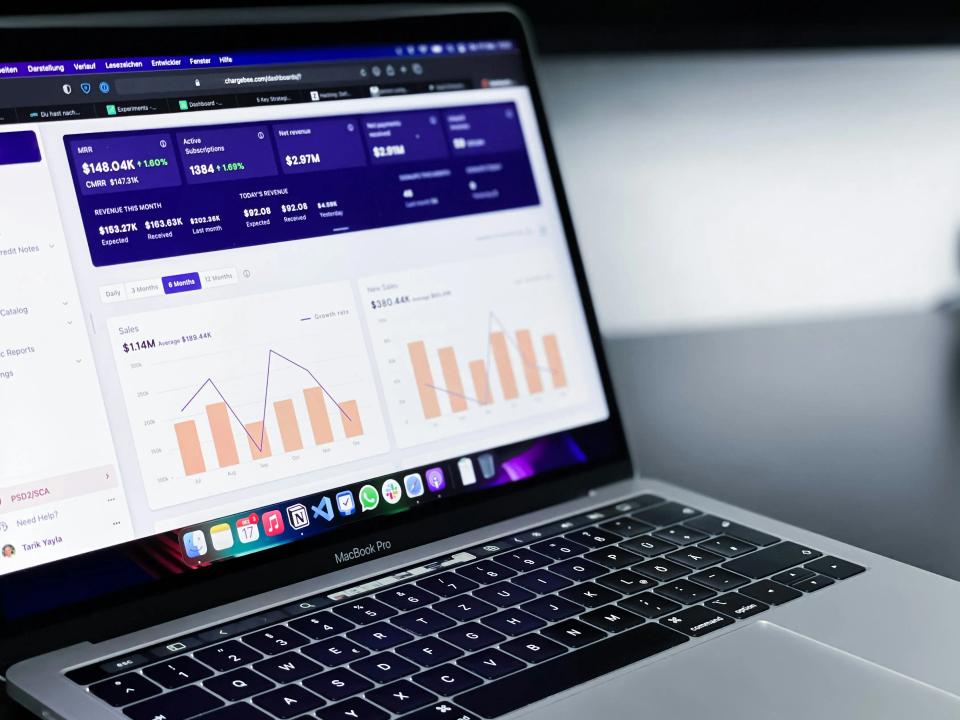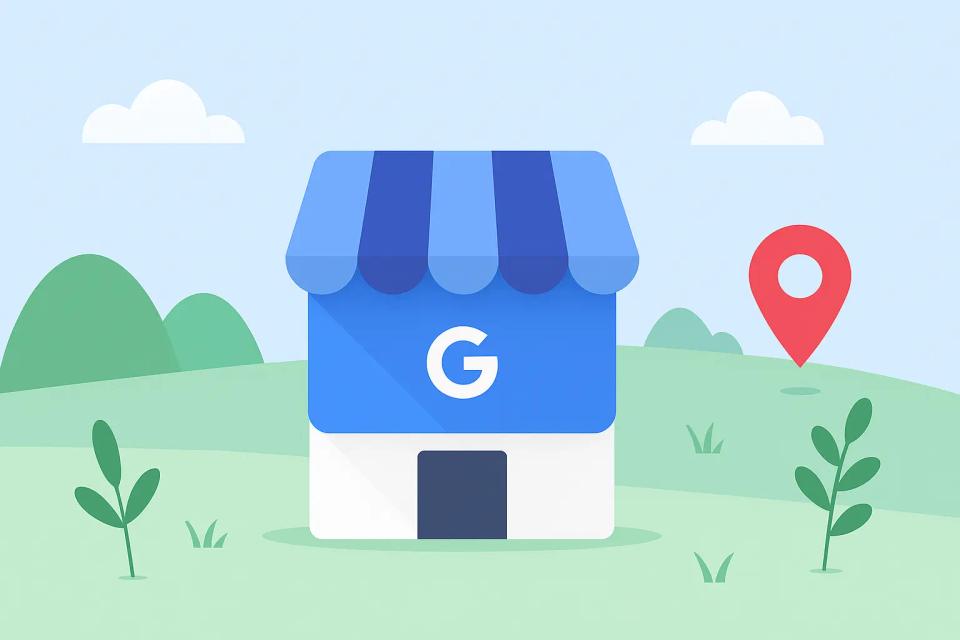Imagine Sarah, searching on her phone for "best coffee shop near me" during her lunch break. Or picture David, looking for an "emergency plumber in downtown" late on a Tuesday night. These aren't just casual queries; they represent high-intent customers actively seeking local solutions. In today's digital landscape, visibility in these "near me" moments isn't just beneficial—it's fundamental for survival and growth. The digital curb appeal of your business starts with mastering local search engine optimization (SEO).
The numbers speak volumes about this shift in consumer behavior. Research consistently shows a significant portion of mobile searches have local intent; in fact, Google reports that searches including "near me" have grown dramatically over the past few years. Ignoring local SEO means potentially missing out on a huge wave of customers ready to walk through your door or click "call now." Optimizing for nearby searches ensures your business appears precisely when and where local customers are looking, turning digital visibility into real-world revenue.
This guide will serve as your comprehensive roadmap. We'll journey through the core principles of local SEO, from optimizing your online listings to building local authority and measuring your success. Let's equip your business to capture the attention of nearby searchers and thrive in your local market.
Understanding Local SEO Fundamentals
Before we chart the course for optimization, let's establish a clear understanding of the territory. What exactly is local SEO, and how does it carve out its unique space within the broader digital marketing world? Think of it as the specialized practice of increasing your business's visibility in the localized results of search engines like Google.
What is Local SEO?
Local SEO focuses on optimizing your online presence to attract more business from relevant local searches. These searches happen not just on Google Search but also on platforms like Google Maps, Apple Maps, Yelp, and other local directories. Unlike general SEO that might target a national or global audience, local SEO hones in on customers within a specific geographic area – the people most likely to physically visit your store or utilize your service within their community. It’s about making sure when someone searches for "pizza place in [Your Town]" or "[Your Service] near me," your business prominently appears.
How local search differs from general SEO
While sharing foundational principles with traditional SEO, local search operates with distinct nuances. General SEO aims for broad visibility across the web, often focusing on informational keywords or nationwide product searches. Local SEO, however, is geographically constrained and intent-driven; the searcher isn't just looking for information, they're often looking to go somewhere or hire someone locally, often immediately. This difference is reflected in how search engines rank local results, placing heavy emphasis on factors like proximity and local relevance, often displaying results in a "Local Pack" map interface. According to insights from Moz, understanding these differences is key to crafting an effective strategy.
Key ranking factors for local search
Google and other search engines use specific signals to rank businesses in local search results. The primary factors revolve around relevance (how well your business matches the search query), distance (how close your business is to the searcher or the location specified in the query), and prominence (how well-known and authoritative your business is, based on online reviews, citations, links, and overall web presence). Optimizing your Google Business Profile is paramount, as it directly feeds information into these ranking factors. Consistent NAP information (Name, Address, Phone Number) across the web also plays a crucial role in establishing trust and prominence.
The local SEO ecosystem
Mastering local SEO involves navigating a connected ecosystem beyond just your website. This includes your Google Business Profile, online review platforms (Yelp, TripAdvisor, industry-specific sites), local directories and citation sources (like those tracked by BrightLocal), social media platforms with location tagging, and mapping services. Each element contributes to your overall local visibility and authority. Effectively managing your presence across this ecosystem ensures consistency and reinforces your relevance to search engines and potential customers alike.
Google Business Profile Optimization (formerly Google My Business)
Your Google Business Profile (GBP) is arguably the cornerstone of your local SEO strategy. It's often the first impression potential customers have of your business in search results and on Google Maps. Think of it as your digital storefront on Google – keeping it polished, informative, and engaging is non-negotiable.
Creating and claiming your profile
The first step is ensuring you have control over your listing. Search for your business on Google or Google Maps; if a profile exists, you'll need to claim it through a verification process (usually via postcard, phone call, or email). If no profile exists, you can create one from scratch using the Google Business Profile platform. This verification step is crucial – it proves to Google that you are the legitimate owner and allows you to manage the information displayed.
Optimizing your business information
Accuracy and completeness are vital here. Ensure your NAP (Name, Address, Phone Number) is precisely correct and consistent everywhere online – discrepancies can confuse search engines and customers. Define your business hours accurately, including special hours for holidays or events. Craft a compelling business description that highlights what makes you unique, incorporating relevant keywords naturally. Select the most accurate primary and secondary categories for your business, and utilize attributes (e.g., "wheelchair accessible," "free Wi-Fi," "outdoor seating") to provide further detail that helps customers and search algorithms understand your offerings. According to Google Business Profile Help, complete profiles are considered more reputable.
Managing photos and visual content
Humans are visual creatures, and high-quality photos significantly impact engagement. Upload clear, appealing images of your storefront (exterior and interior), products, services, team, and happy customers. Regularly adding new photos keeps your profile fresh and shows potential customers what to expect. Videos can also be uploaded, offering an even more dynamic glimpse into your business. Profiles with photos receive more requests for driving directions and more clicks through to websites, demonstrating the power of visual appeal in local search.
Leveraging Google Posts
Google Posts are like mini-ads or social media updates that appear directly on your GBP listing in search results. Use them to promote special offers, announce events, highlight new products or services, or share company news. Posts have a limited lifespan (typically seven days, unless event-based), so consistent posting is key to maintaining visibility and engagement. They provide a direct channel to communicate timely information to searchers actively looking at your profile.
Responding to reviews
Reviews are a critical component of your GBP and overall online reputation, which we'll explore further in our section on Review Management and Reputation. Actively monitoring and responding to all reviews – positive and negative – is essential. Thank positive reviewers, and address negative feedback professionally and constructively. Google has stated that responding to reviews shows you value your customers and their feedback, which can positively influence potential customers and even search rankings.
Website Optimization for Local Search
While your Google Business Profile is crucial, your website remains your digital home base. Optimizing it for local search ensures that when users click through from your GBP or find you through organic results, they land on a site that reinforces your local relevance and encourages conversion. It’s about aligning your owned digital property with your local SEO goals.
Local keyword optimization
Infusing your website content with relevant local keywords is fundamental. Think beyond just your primary service; consider geographic terms (city, neighborhood, region), service-area specific phrases ("plumber serving [neighboring town]"), and long-tail local keywords ("best deep dish pizza downtown Chicago"). Integrate these terms naturally into page titles, headings (H1, H2s), body copy, image alt text, and meta descriptions. Tools like Semrush offer keyword research capabilities to help identify valuable local search terms your customers are using. Remember, the goal is relevance, not keyword stuffing.
Creating location-specific pages
If your business serves multiple distinct areas or has multiple physical locations, creating dedicated pages for each is a powerful strategy. Each page should feature unique content relevant to that specific location, including the local address and phone number, tailored service descriptions, local landmarks, customer testimonials from that area, and perhaps even directions or an embedded map. This approach signals strong geographic relevance to search engines for each service area and provides a better user experience for visitors seeking location-specific information. These pages become prime targets for your Technical Local SEO Elements like schema markup.
Local schema markup implementation
Schema markup is a type of structured data vocabulary that helps search engines better understand the information on your website. Implementing local business schema (defined at Schema.org) on your website, particularly on location pages and your contact page, explicitly tells search engines your business name, address, phone number, hours, and other key details in a format they can easily parse. This can enhance your visibility in search results, potentially leading to rich snippets (like star ratings or hours displayed directly in the SERP). While it's a bit technical, plugins for popular CMS platforms like WordPress can simplify implementation, or you can consult resources from Google Search Central for guidance.
Mobile optimization essentials
Given that a vast majority of "near me" searches happen on mobile devices, a mobile-friendly website isn't optional – it's essential. Your site must load quickly and display correctly on various screen sizes. Use responsive design, ensure tap targets (like buttons and links) are easily clickable, and optimize images for fast loading. Google uses mobile-first indexing, meaning it primarily uses the mobile version of your content for indexing and ranking. A poor mobile experience will directly harm your local search performance and frustrate potential customers – industry data suggests users are significantly less likely to engage with a business if they have a negative mobile experience.
Local content creation strategies
Beyond static pages, your website content strategy should incorporate local relevance. This ties closely into our discussion on Local Content Marketing Strategies. Consider creating blog posts about local events you're participating in, guides to your neighborhood, case studies featuring local clients, or news relevant to your local industry. This type of content not only attracts local search traffic but also positions your business as an active, engaged member of the community, building trust and authority.
Building Local Citations and Links
Beyond your own website and Google Business Profile, your business's presence across the wider web plays a significant role in local SEO. Citations (mentions of your NAP) and local backlinks act as votes of confidence, signaling your legitimacy and prominence to search engines. Building a strong, consistent profile across relevant online platforms is key.
Understanding citation importance
A local citation is any online mention of your business's Name, Address, and Phone number (NAP), often accompanied by a link to your website. These mentions can occur on business directories (Yelp, Yellow Pages), social media platforms, industry-specific websites, local chamber of commerce sites, and more. Consistency is paramount; search engines use citations to verify your business details. Inconsistent NAP information across different platforms can erode trust and negatively impact your local rankings. Think of citations as foundational elements that corroborate the information you provide on your GBP and website.
Key citation sources
Focus your efforts on acquiring citations from reputable and relevant sources. Start with the major data aggregators and well-known business directories like Yelp, Bing Places, Apple Maps, and Foursquare. Then, explore industry-specific platforms relevant to your niche (e.g., TripAdvisor for hospitality, Avvo for legal services). Don't overlook local business associations, chamber of commerce websites, and local news sites or blogs. Quality often trumps quantity; a citation from a highly relevant local source can be more valuable than dozens from generic directories. Resources like the BrightLocal citation tracker can help identify top sources for your industry and location.
Citation audit and cleanup
Before actively building new citations, it's crucial to audit your existing ones. Use tools or manual searches to find where your business is currently listed online. Identify any inconsistencies in your NAP information (old addresses, incorrect phone numbers, variations in business name) or duplicate listings. Cleaning up these inaccuracies is a critical step; submit updates to directories or contact site administrators to correct errors. This ensures search engines see a unified, trustworthy representation of your business across the web.
Local link building strategies
While citations are important, earning actual backlinks from other local websites carries even more SEO weight. These links act as endorsements. Engage in community involvement – sponsor a local sports team, participate in community events, or host a workshop. These activities often lead to mentions and links from local organizations or news outlets. Forge local partnerships with complementary, non-competing businesses for cross-promotion, which might include website links. Event sponsorships are another excellent way to gain visibility and potentially earn links from event websites or media coverage. Focus on building genuine relationships within your community, and link opportunities will often follow naturally.
Review Management and Reputation
In the local search arena, your online reputation, primarily shaped by customer reviews, is a powerful currency. Reviews influence both potential customers making decisions and search engine algorithms determining rankings. Proactive review management isn't just about damage control; it's about building trust and leveraging social proof.
Importance of local reviews
Online reviews are incredibly influential. A significant percentage of consumers read online reviews for local businesses before making a purchase decision – BrightLocal's consumer review survey consistently highlights that the vast majority trust online reviews as much as personal recommendations. Positive reviews build credibility and social proof, encouraging new customers to choose you. Furthermore, Google explicitly states that high-quality, positive reviews can improve your business's visibility, factoring them into local ranking considerations as a measure of prominence.
Strategies for gathering reviews
Don't be passive; actively encourage satisfied customers to leave reviews. Make it easy for them by providing direct links to your review profiles (especially Google) on your website, in email signatures, or via follow-up emails after a purchase or service. Ask customers in person at the point of sale if they had a positive experience. However, never offer incentives for reviews, as this violates the terms of service for most platforms, including Google. Focus on providing excellent service, and then simply ask happy customers to share their experience online.
Responding to reviews effectively
Engaging with reviews is as important as gathering them. Respond promptly and professionally to all reviews, both positive and negative. Thank customers for positive feedback, reinforcing their good experience. For negative reviews, respond empathetically, acknowledge their concerns (without necessarily admitting fault if unwarranted), and offer to take the conversation offline to resolve the issue. A thoughtful response shows potential customers that you care about feedback and are committed to customer satisfaction, often mitigating the impact of a negative review. Consistent engagement is key, as highlighted in the Google Business Profile guidelines.
Managing your online reputation
Review management is part of a broader online reputation management strategy. Monitor mentions of your brand across the web, not just on review sites but also on social media and forums. Address customer service issues proactively before they escalate into negative reviews. Consistently delivering excellent customer experiences is the most effective way to build a positive online reputation organically. Your reputation directly impacts consumer trust and, consequently, your local search performance.
Local Content Marketing Strategies
Content marketing isn't just for national brands; it's a powerful tool for local businesses to connect with their community, demonstrate expertise, and attract relevant search traffic. Creating content specifically tailored to your local audience builds authority and provides valuable resources that search engines favor.
Creating locally relevant content
Think about the questions, interests, and needs of your local customer base. Develop content that addresses these directly. This could include blog posts, guides, infographics, or videos centered around local themes. For example, a local hardware store could create a guide to gardening in the regional climate, or a restaurant could blog about local food festivals. This type of content signals strong local relevance to search engines and provides genuine value to your community.
Local event coverage
Is your business participating in, sponsoring, or hosting a local event? Create content around it! Write a blog post previewing the event, share photos and updates during the event on social media (and later on your blog), or publish a recap afterward. This not only promotes your involvement but also generates timely, locally focused content that can attract searchers looking for information about that event. It positions your business as an active participant in the community fabric.
Community involvement highlights
Showcase your business's commitment to the local area. Write about charitable activities, sponsorships of local teams or organizations, or partnerships with other local businesses. Highlighting your community involvement builds goodwill and brand affinity. It also creates opportunities for natural local keyword integration and potentially earns links or mentions from the organizations you support, contributing to your Local Link Building Strategies.
Local news and updates
Stay informed about local news and developments relevant to your industry or customers. Can you offer a local perspective on a broader trend? Did a local regulation change that impacts your customers? Sharing relevant local news (with your own commentary or angle) can position you as a knowledgeable local resource. This keeps your content fresh and demonstrates you have your finger on the pulse of the community.
Area-specific blog posts
Go beyond just mentioning your city; dive deeper into specific neighborhoods or surrounding towns you serve, especially if you have created Location-Specific Pages. Write blog posts like "The Best Dog Parks in [Neighborhood]" (for a pet store), "A Guide to Historic Homes in [Town]" (for a realtor), or "Weekend Getaways Near [Your City]" (for a hotel or B&B). This hyperlocal content targets specific search queries and resonates strongly with residents of those areas.
Technical Local SEO Elements
While content and off-page factors like citations and reviews are crucial, the technical foundation of your website also needs to be optimized for local search. Ensuring search engines can easily crawl, understand, and index your locally relevant information is key to visibility. These technical elements work behind the scenes to support your overall strategy.
Local landing page optimization
Your primary local landing pages (homepage for single-location businesses, specific location pages for multi-location businesses) require careful optimization. Ensure the page title, H1 tag, and meta description clearly include your primary local keyword (e.g., "Plumber in [City, State]"). Embed a Google Map showing your location. Prominently display your full NAP (Name, Address, Phone Number) – make sure it's crawlable HTML text, not just an image. Include locally relevant content and customer testimonials specific to that area.
URL structure for local pages
For businesses with multiple locations, implement a clear and logical URL structure for your location pages. A common best practice is yourwebsite.com/locations/[city-state]/ or yourwebsite.com/[city-state]/. This structure provides clear signals to both users and search engines about the geographic focus of the page. Keep URLs concise and descriptive, incorporating the location name naturally. Consistent URL structure aids crawlability and indexing.
Meta descriptions with local focus
While not a direct ranking factor, meta descriptions significantly impact click-through rates from search results. Craft compelling meta descriptions for your key local pages (homepage, location pages, core service pages) that include your target local keywords and a clear call to action. Mentioning your city or service area directly in the description assures searchers that your result is relevant to their local query, increasing the likelihood they'll click. Think of it as your brief ad in the search results.
Image optimization for local search
Optimize the images on your website, especially those on local landing pages or in your photo gallery. Use descriptive file names that include local keywords (e.g., best-pizza-downtown-chicago.jpg instead of IMG_001.jpg). Add alt text to each image, describing the image content and naturally incorporating relevant local terms. Geotagging your images (embedding latitude and longitude coordinates) can provide an additional, albeit minor, local signal. Properly optimized images contribute to page relevance and can also appear in image search results. Referencing Google's image best practices can provide further guidance.
Measuring Local SEO Success
Optimizing for local search is an ongoing process, not a one-time task. To understand what's working, what's not, and where to focus your efforts, you need to consistently track and analyze your performance. Measurement provides the insights needed to refine your strategy and demonstrate ROI.
Key metrics to track
Several key performance indicators (KPIs) are crucial for monitoring local SEO success. Track your rankings for target local keywords in specific geographic areas (using rank tracking tools). Monitor organic traffic to your local landing pages via Google Analytics. Analyze your Google Business Profile Insights data, paying attention to metrics like search views, map views, website clicks, direction requests, and phone calls originating from your profile. Conversion tracking (e.g., form submissions, calls from website numbers) is also vital to connect SEO efforts to actual business results. Google Analytics provides much of this website data.
Tools for local SEO monitoring
Numerous tools can assist in tracking your local SEO performance. Rank tracking software (often included in suites like Semrush or Moz Local) allows you to monitor keyword positions in specific locations. Google Analytics is essential for website traffic and behavior analysis. Google Business Profile Insights provides direct data on profile interactions. Citation monitoring tools (like those from BrightLocal) help track your online listings and identify inconsistencies. Utilizing these tools provides a comprehensive view of your local visibility and engagement.
Analyzing competitor performance
Keep an eye on what your local competitors are doing. Analyze their Google Business Profiles – what categories are they using? How frequently do they post? What do their reviews look like? Examine their website's local optimization efforts and the keywords they appear to be targeting. Understanding competitor strategies can reveal opportunities for differentiation or areas where you need to improve to stay competitive in the local pack and organic results.
Adjusting strategies based on data
Measurement without action is pointless. Regularly review your tracked metrics and analytics data. Are your rankings improving for key terms? Is traffic to location pages increasing? Are you getting more calls or direction requests from your GBP? Use these insights to double down on successful tactics, identify underperforming areas that need adjustment (e.g., improving content on a specific page, building more citations, focusing on review generation), and continually refine your local SEO strategy for optimal results. Data-driven decisions lead to more effective and efficient optimization.
Advanced Local SEO Tips
Once you've mastered the fundamentals, several advanced tactics can further enhance your local visibility and help you stay ahead of the curve. These strategies address emerging trends and specific business scenarios, adding another layer of sophistication to your local SEO efforts.
Voice search optimization
With the rise of smart speakers and voice assistants on phones, optimizing for voice search is increasingly important. Voice searches are often longer, more conversational, and frequently have local intent (e.g., "Hey Google, find an open Italian restaurant near me"). Focus on answering common local questions directly in your website content using natural language. Ensure your GBP information (especially hours and address) is accurate, as voice assistants rely heavily on this data. Structuring content with FAQs can also help capture voice search queries.
Local SEO for multiple locations
Managing local SEO for a business with numerous locations presents unique challenges. Consistency is key – ensure NAP information is accurate and uniform for each location across all platforms. Create dedicated, optimized landing pages for each location on your website, as discussed in Website Optimization for Local Search. Utilize GBP's features for managing multiple listings efficiently. Tailor content and promotions where possible to reflect the specific community around each location, rather than using a purely generic approach. Centralized management tools and clear internal processes are essential.
Seasonal optimization strategies
Many local businesses experience seasonal fluctuations. Adapt your local SEO strategy accordingly. Update your GBP hours and description for seasonal changes (e.g., extended summer hours, holiday closures). Create seasonal Google Posts promoting relevant offers or events. Develop seasonal content for your website or blog (e.g., "Winter Car Care Tips" for an auto shop, "Best Patios for Summer Dining" for a restaurant). Adjust your keyword focus to capture seasonal search trends relevant to your business and location.
Emerging local SEO trends
The local search landscape is constantly evolving. Keep an eye on emerging trends like the increasing importance of visual search, the integration of local inventory ads, the potential impact of AI on local recommendations, and the growing emphasis on E-E-A-T (Experience, Expertise, Authoritativeness, Trustworthiness) signals even in a local context. Staying informed through resources like Search Engine Journal and experimenting with new features and platforms can provide a competitive edge. Adapting to change is crucial for long-term local SEO success.
Common Local SEO Mistakes to Avoid
While implementing the strategies outlined above is crucial, it's equally important to avoid common pitfalls that can undermine your efforts. Steering clear of these mistakes will help ensure your local SEO foundation is solid and effective.
Inconsistent NAP information
This is perhaps the most frequent and damaging local SEO error. Variations in your business name, address, or phone number across different online directories, your website, and your Google Business Profile confuse search engines and erode trust. Perform regular Citation Audits and ensure absolute consistency everywhere your business information appears online. Even small discrepancies (e.g., "St." vs. "Street," "Inc." vs. no "Inc.") can cause problems.
Neglecting mobile optimization
Given that the majority of local searches occur on mobile devices, failing to provide a seamless mobile experience is a critical mistake. A website that is slow to load, difficult to navigate, or displays incorrectly on smartphones will frustrate users and harm your rankings. Prioritize responsive design, fast loading speeds, and easy-to-use navigation as outlined in our section on Mobile Optimization Essentials. Test your site regularly on different mobile devices.
Ignoring customer reviews
Failing to actively manage your online reviews is a missed opportunity and a potential liability. Not encouraging reviews means missing out on valuable social proof. Not responding to reviews (especially negative ones) suggests you don't value customer feedback and can deter potential customers. Implement a proactive strategy for Review Management and Reputation by encouraging reviews and responding thoughtfully to all feedback.
Poor citation management
Simply building citations isn't enough; they need to be accurate and managed over time. Allowing incorrect information to persist on major directories, creating duplicate listings, or focusing on low-quality, irrelevant directories can do more harm than good. Regularly audit your citations, clean up inaccuracies, remove duplicates, and focus on building listings on reputable, relevant platforms as discussed in Building Local Citations and Links.
Conclusion
Navigating the currents of local SEO is essential for any business aiming to connect with nearby customers. From establishing your foundational presence with an optimized Google Business Profile and a locally-tuned Website, to building authority through Citations and Links and managing your Online Reputation, each element plays a vital role in enhancing your visibility. We've explored the importance of Local Content, addressed crucial Technical Elements, and highlighted the need for ongoing Measurement and adaptation, even touching upon Advanced Tactics and Common Mistakes.
The journey to the top of local search results requires diligence and a strategic approach. The key takeaway is consistency – consistent NAP, consistent high-quality service leading to positive reviews, consistent content creation, and consistent monitoring and refinement. Start by auditing your current online presence, focusing first on claiming and optimizing your Google Business Profile and ensuring your website is mobile-friendly and locally relevant. Then, systematically work through building citations, encouraging reviews, and creating valuable local content.
The future of local SEO will undoubtedly continue to evolve, driven by changes in technology like voice search and AI, and shifts in consumer behavior. However, the core principles of providing accurate information, demonstrating local relevance, building authority, and offering excellent customer experiences will remain constant. By implementing the strategies discussed here, your business can effectively capture the attention of nearby searchers and translate that digital visibility into tangible growth.













